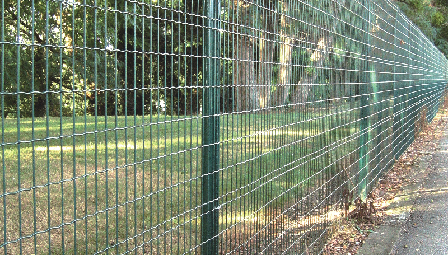Installing Metal Edging to Enhance Your Landscaping Design and Garden Borders
12 月 . 04, 2024 08:35
Installing Metal Edging for Landscaping A Comprehensive Guide
Metal edging has become a popular choice among homeowners and landscapers for creating clean and distinct boundaries in gardens, flower beds, and pathways. Its durability, versatility, and aesthetic appeal make it an excellent option for those looking to enhance their outdoor spaces. In this guide, we will provide a detailed overview of installing metal edging for landscaping, covering everything from the materials you need to the step-by-step installation process.
Why Choose Metal Edging?
Before diving into the installation process, it's essential to understand the advantages of metal edging. Unlike plastic or wooden alternatives, metal edging holds up well against wear and tear, resisting warping, rotting, and fading over time. It also provides a sleek, modern look that can enhance the overall appearance of your landscape. Available in various materials such as aluminum, steel, and galvanized metal, metal edging can be found in different thicknesses and styles to suit your specific design preferences.
Materials Needed
To install metal edging, you will need the following materials and tools
- Metal edging strips - Stakes or anchors (depending on the edging type) - A rubber mallet - A measuring tape - A shovel or spade (for defining the edging line) - A level (to ensure that your edging is straight and even) - A pair of garden gloves for hand protection
Step-by-Step Installation Process
Step 1 Plan Your Design
Before starting the installation, take some time to plan the layout of your garden or landscape. Measure the area where you will install the edging and mark the desired boundaries with spray paint or string. Consider the overall visual impact, taking into account the plant types, colors, and heights that will complement your metal edging.
Step 2 Prepare the Area
Clear the area of any debris, grass, or existing materials. Use a shovel or spade to create a trench that is slightly wider and deeper than the metal edging. This will allow the edging to sit firmly in place and provide stability. The trench should follow the planned design lines, so take your time to ensure it is even and curves smoothly where necessary.
installing metal edging for landscaping

Step 3 Position the Metal Edging
Once the trench is ready, lay the metal edging strips into the trench. If your edging comes in sections, connect them according to the manufacturer’s instructions. Check that the edging is aligned with your marked lines and adjust as necessary. Use a level to confirm that the top of the edging is even, ensuring that it will not obstruct mowing or other maintenance tasks.
Step 4 Secure the Edging
Using a rubber mallet, gently drive stakes or anchors into the ground alongside the metal edging to secure it firmly in place. Ensure that the stakes are positioned at regular intervals to maintain stability, especially for longer sections. The edging should sit slightly above the soil level to allow for drainage and to create a professional appearance.
Step 5 Fill Around the Edging
After securing the edging, backfill soil around the outside of the edging to hold it in place and fill any gaps. This step is crucial for preventing movement from weather elements or landscaping activities. Pack the soil tightly to eliminate any air pockets and ensure that the metal edging remains stable.
Step 6 Mulch or Plant
With the metal edging installed, you can now add mulch, gravel, or plant flowers and shrubs within the defined area. The metal edging will not only enhance the aesthetic appeal of your garden but also help keep grass and weeds from encroaching into your flower beds.
Final Touches
Once everything is in place, take a step back to admire your work. Make any final adjustments to ensure everything is aligned and even. Additionally, regular maintenance is essential to keep the edging looking its best. Periodically check for any shifts or instability in the metal and maintain the surrounding landscape to prevent weed growth.
Conclusion
Installing metal edging can be a rewarding DIY project that transforms your outdoor space. With careful planning and execution, you can achieve a polished look that enhances your landscaping while providing practical benefits. By following these steps, you’ll not only improve the function of your garden but also elevate its overall aesthetic appeal. Enjoy your beautifully defined landscape, and take pride in the hands-on work you completed!




















